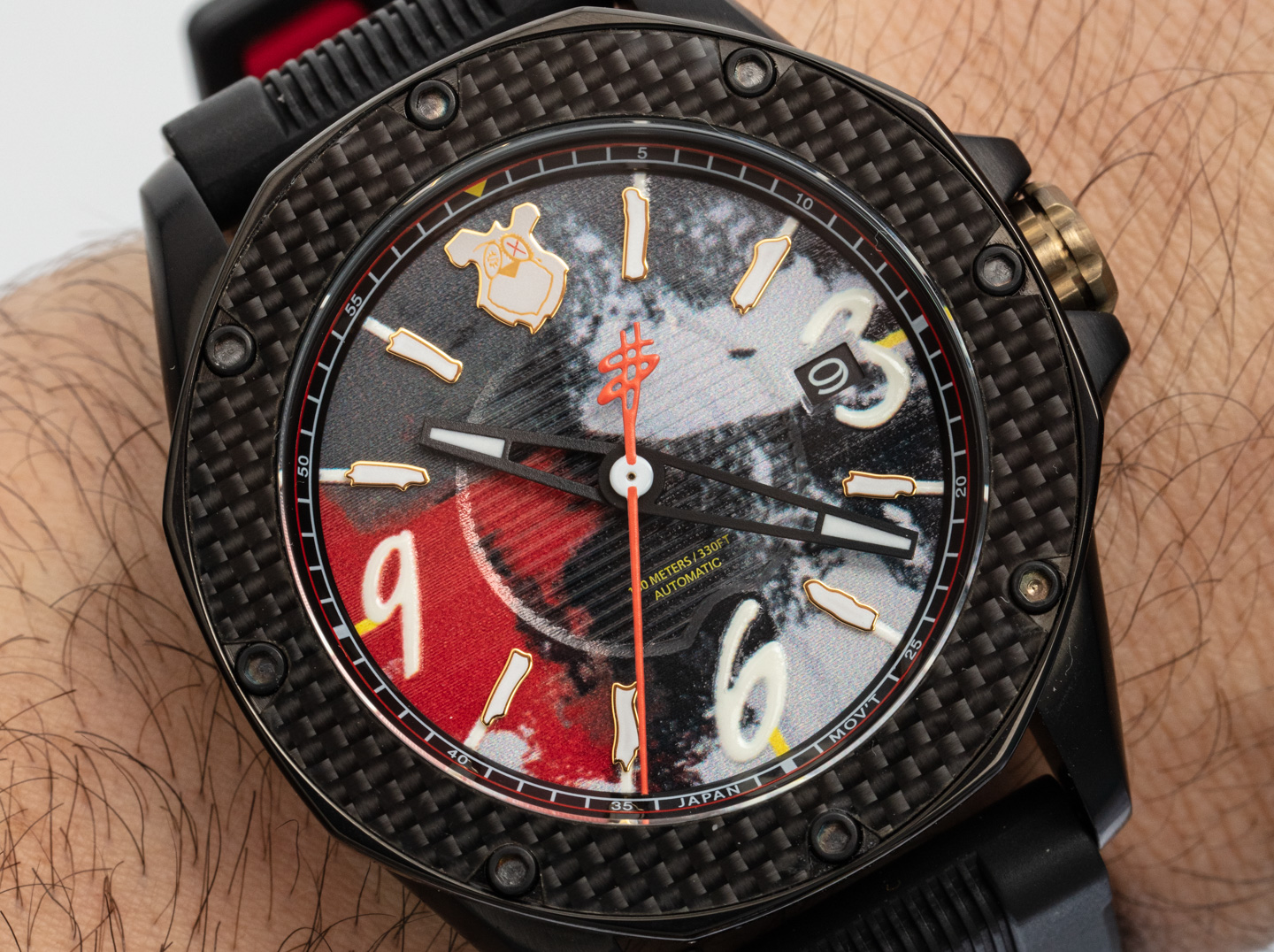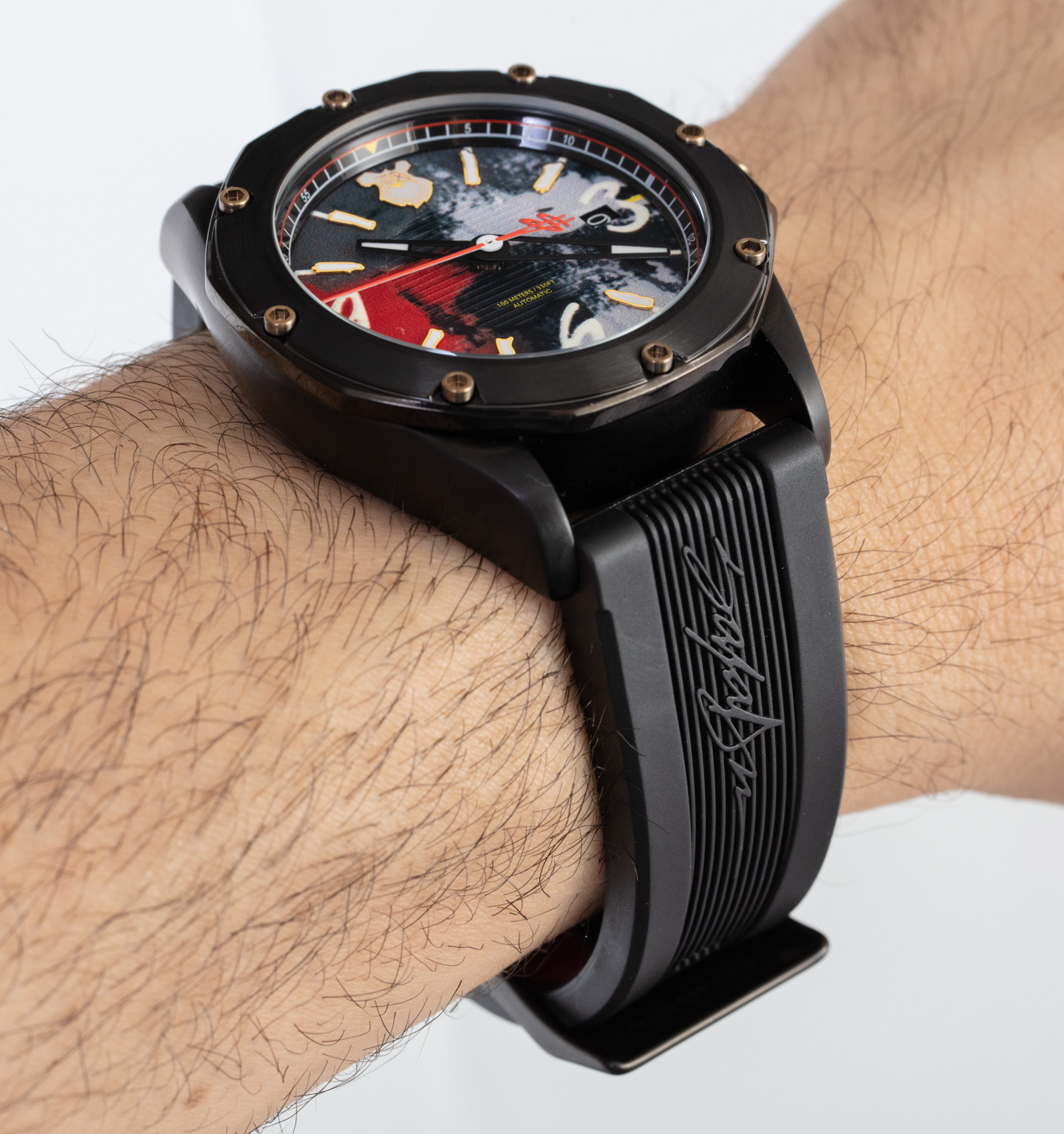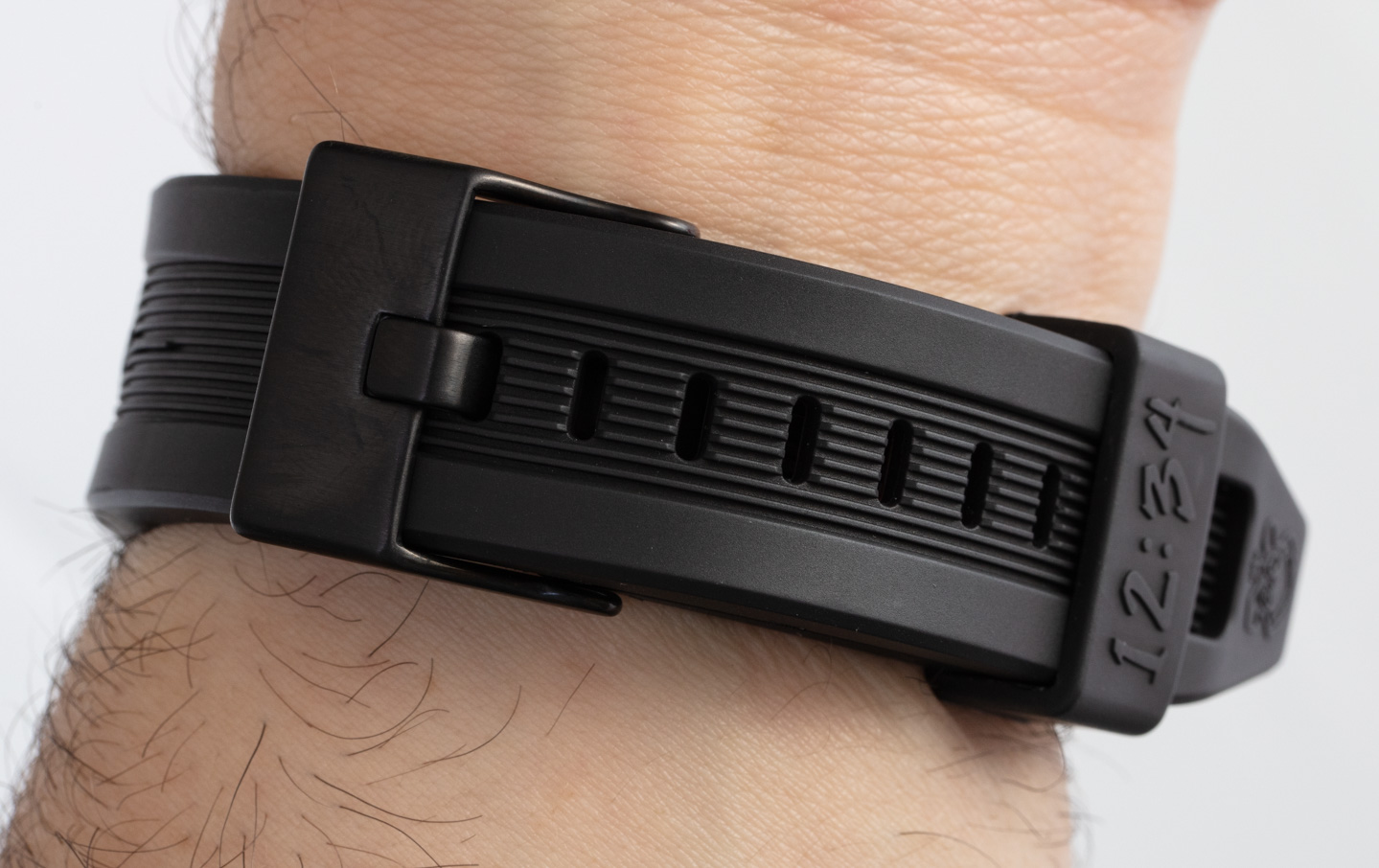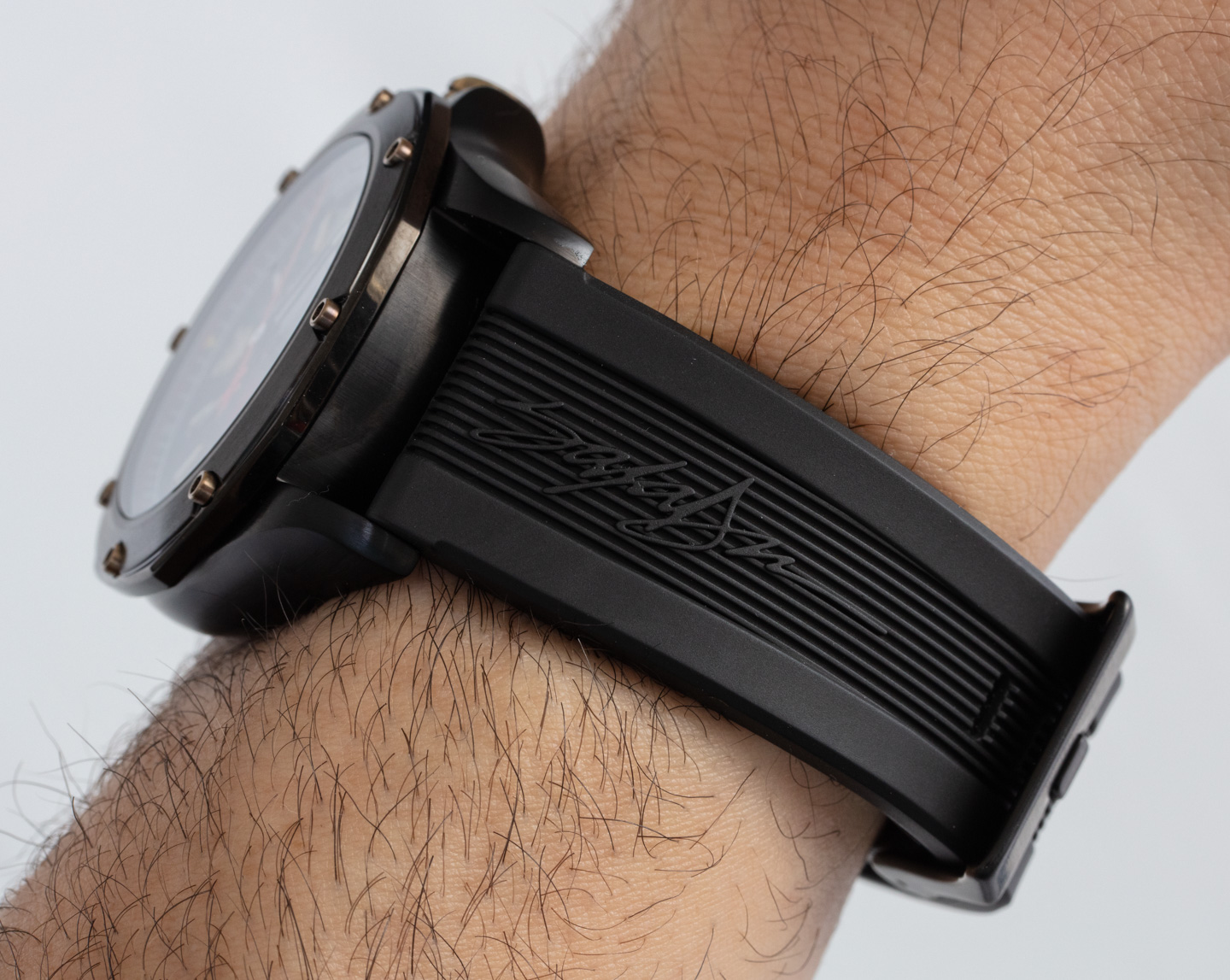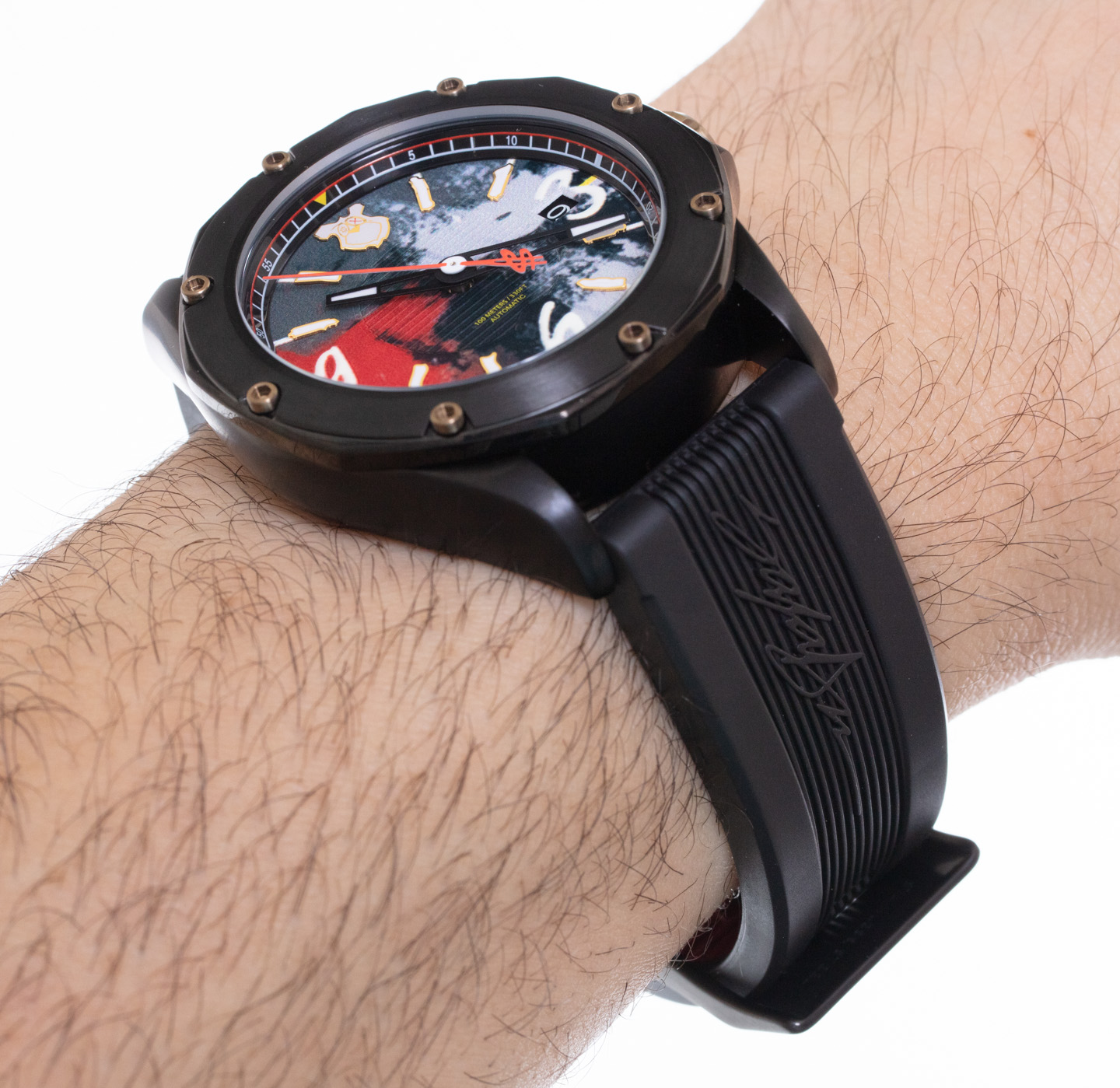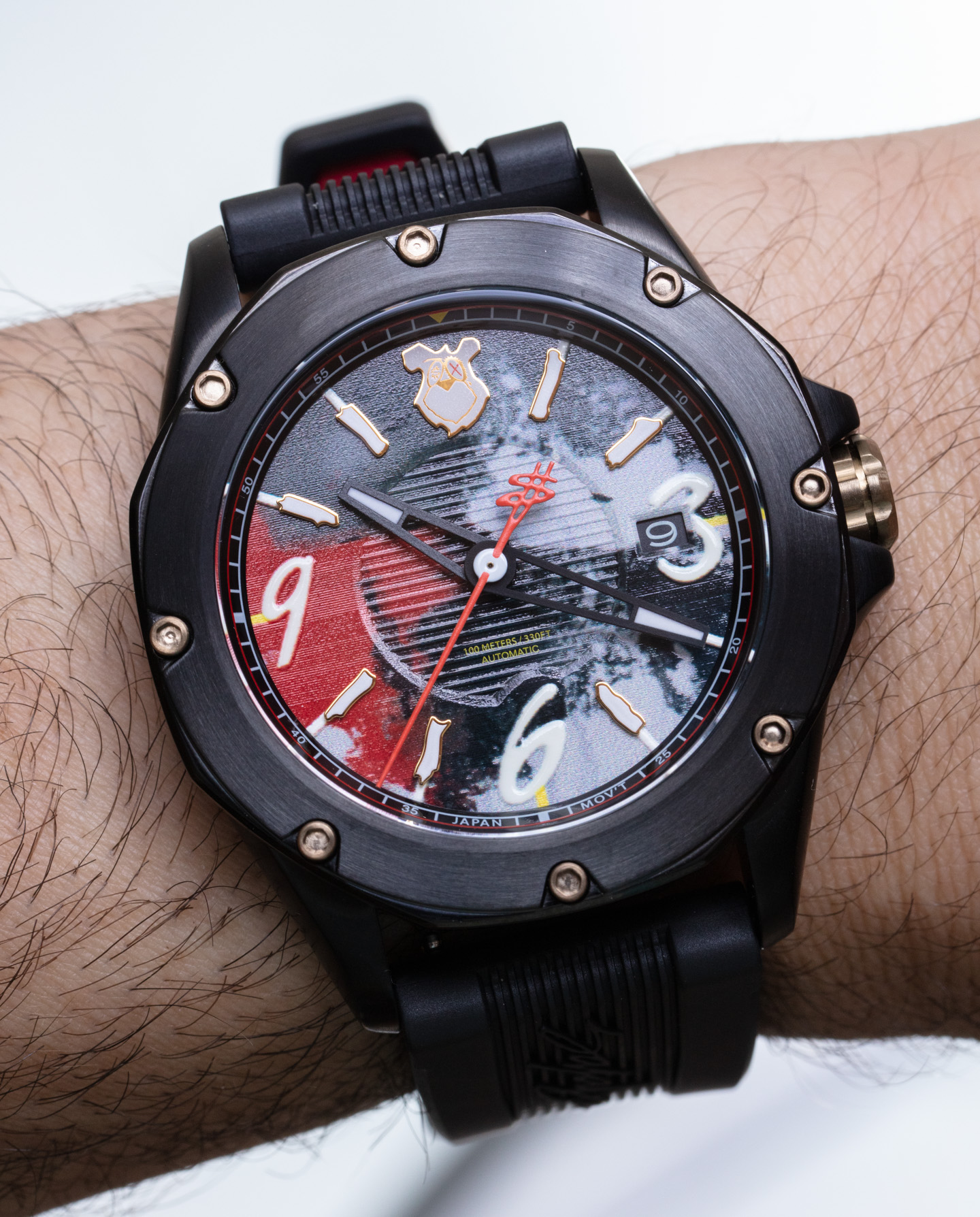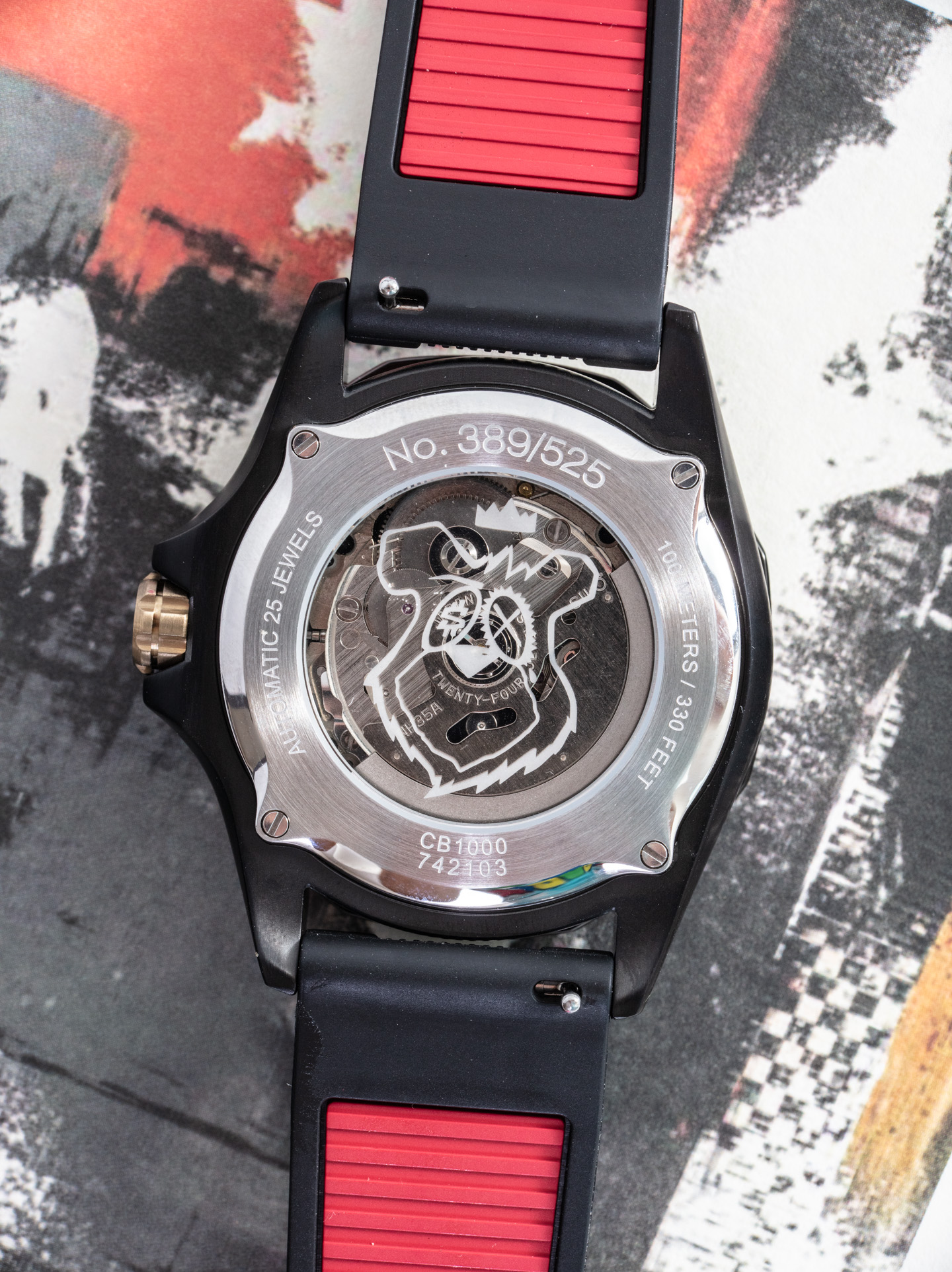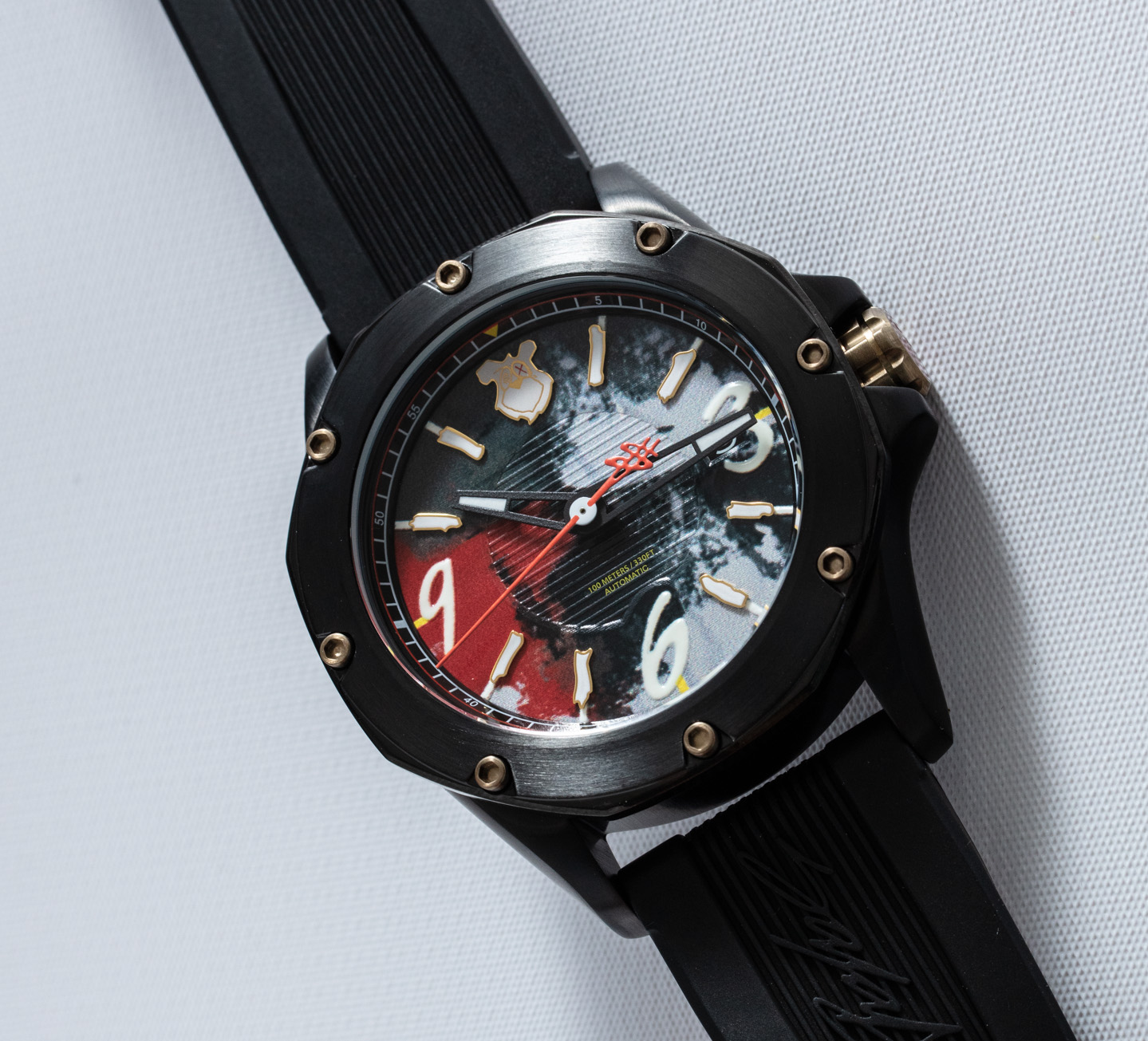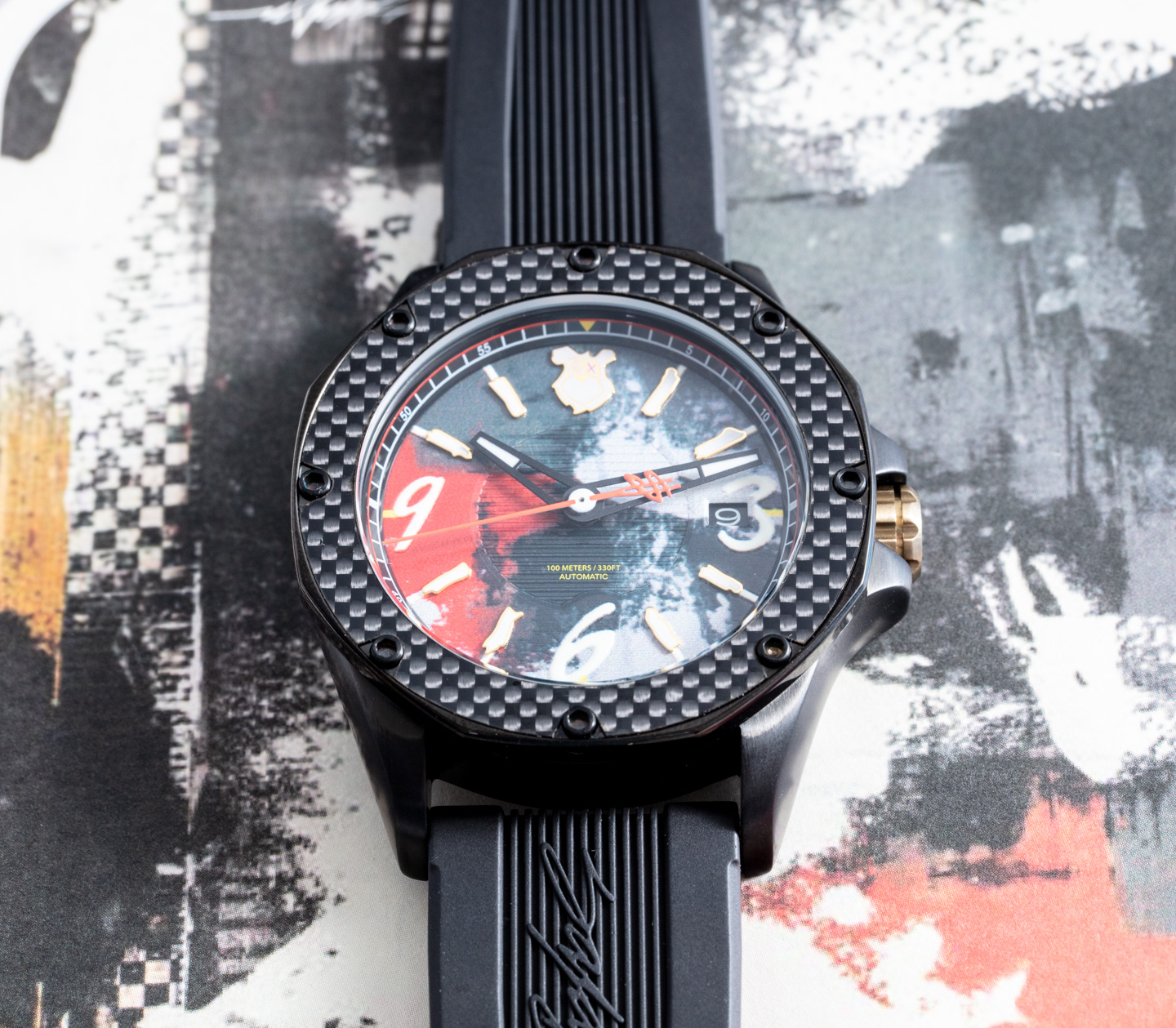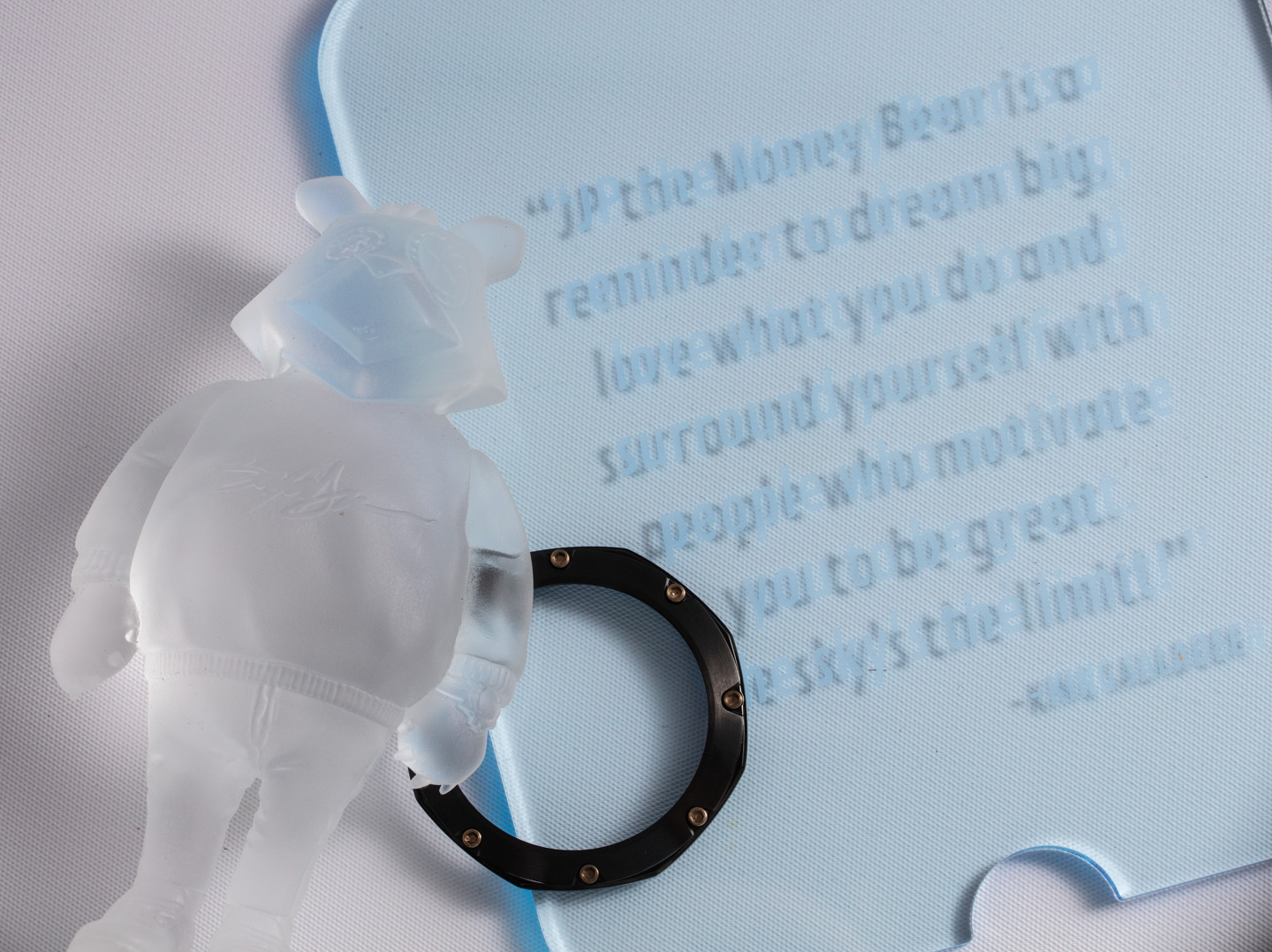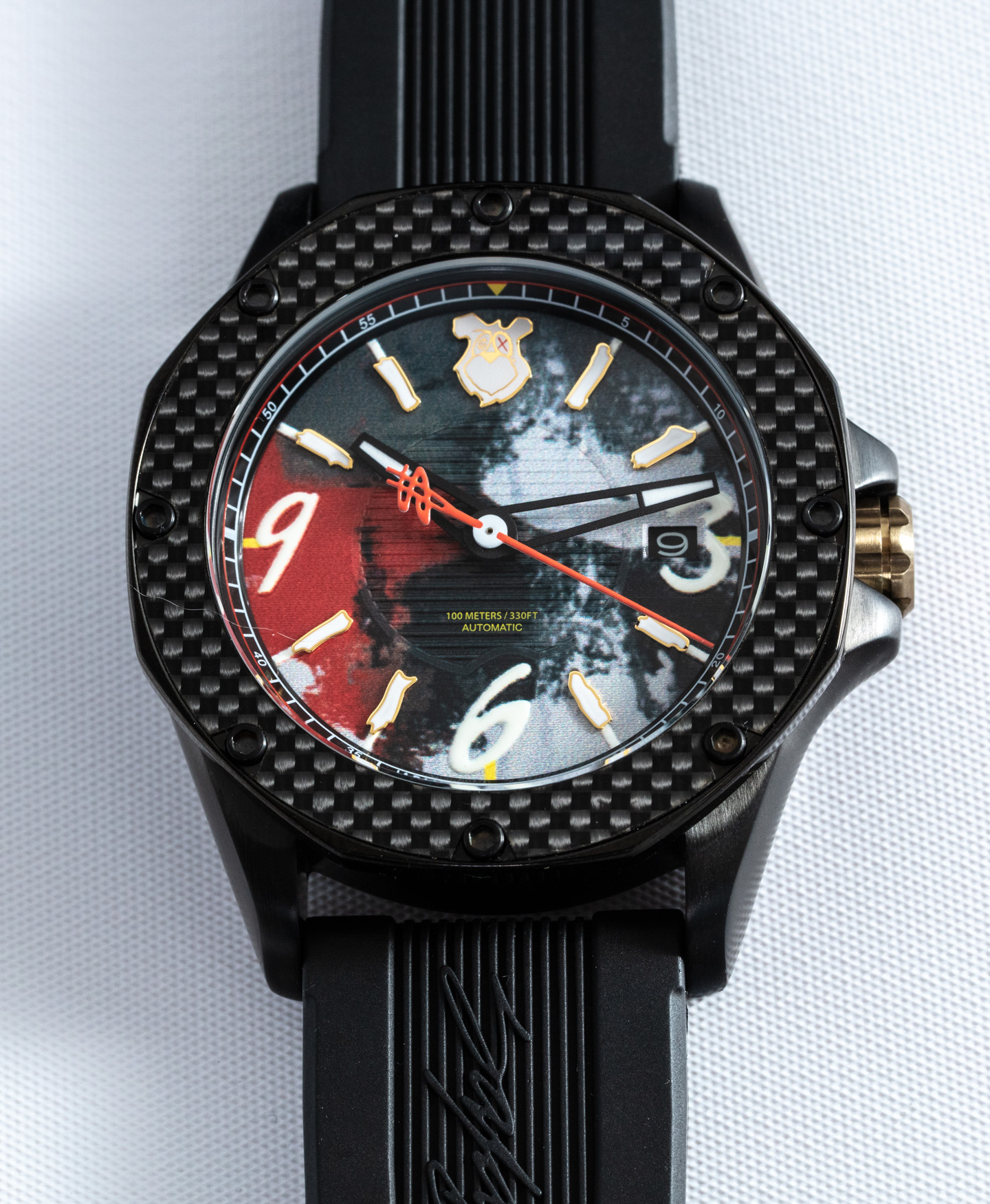
The world of contemporary collectors’ watches is often accused of not enough originality. That’s a misconception for those who don’t dig deep enough. In fact, the last several years have seen some of the wildest and most original timepieces ever to be created — ranging from impractically complicated marvels to special-edition timepieces imagined by some of the more distinctive personalities today. The truth is that while most of today’s truly experimental watches rarely achieve mainstream appeal with any haste, the richness of creative and visual variety within the timepiece space has arguably never been better. Personality-driven versus utility or purely design-driven wristwatches is one of the hottest conversations within the space right now. And that’s only going to be amplified in the future.
In some ways, the watch industry has already begun to explore the wider world of personality-driven timepieces today. The core notion is a wristwatch that, in addition to performing expected tasks (such as telling the time), is a wearable extension of a creative personality. These watches are purpose-built to suit the whims and predilections of one person. If that person’s tastes are culturally relevant enough (with ample marketing support), today’s consumerist culture has made it very clear there is demand for such objects. Enter the era of a part of the watch industry that is putting old names and marks behind them. Instead, manufacturers will rely on the name and following of influential members of the “expression community” (as I call it) and make watches for their audiences.
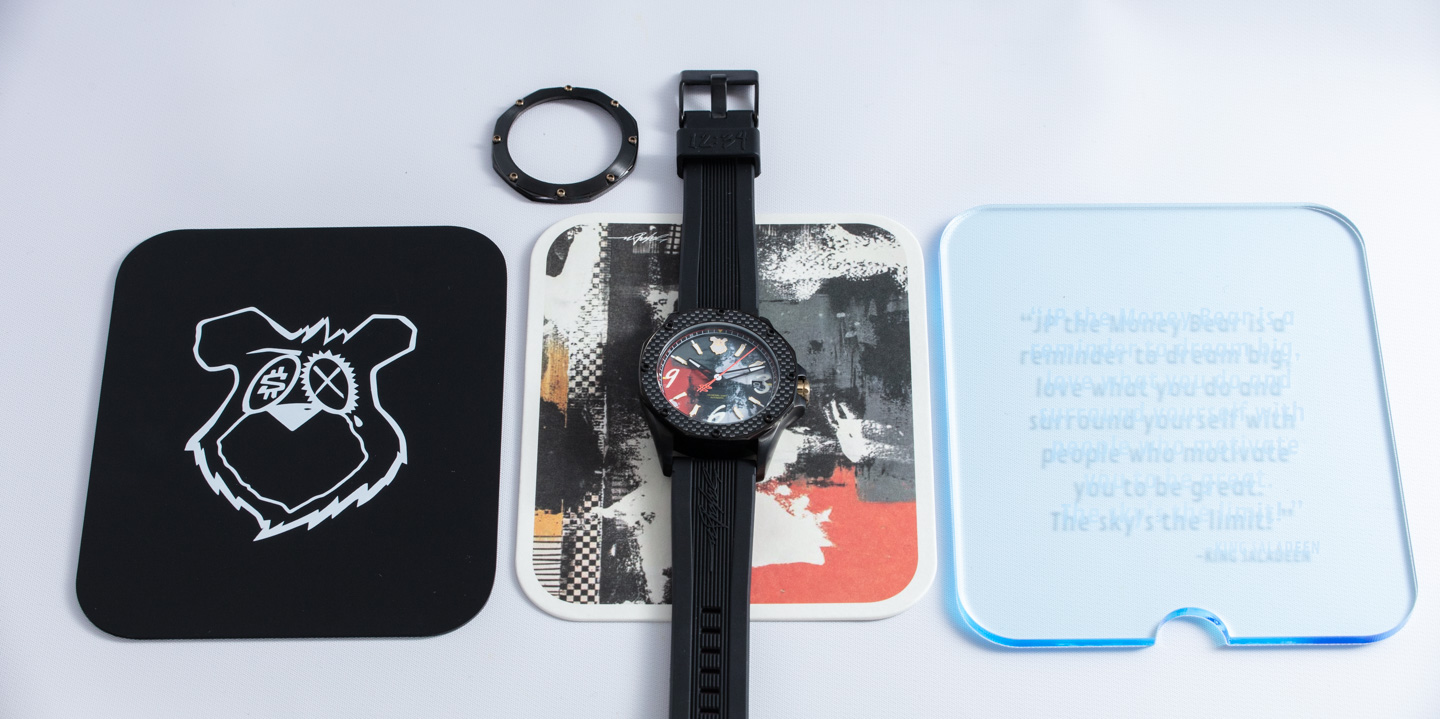
Why can’t these personalities just make watches themselves without the help of established manufacturers? Technically, they can, but doing so yields less than stellar results most of the time. Designing and manufacturing watches is so complex and nuanced (if you want a good result, that is), that personalities like King Saladeen are best served by partnering with a manufacturer who white-label produces timepieces for them. And that’s exactly the relationship that King Saladeen’s company was privy to with a design and manufacturing team that is supported by America’s Fossil Group.
The King Saladeen JP-427G limited-edition watch is the first timepiece imagined by the contemporary pop artist known as King Saladeen. A native of West Philadelphia, Raheem Saladeen Johnson (who goes by “King Saladeen”) is a self-described auto-didact who has became a fixture within a slice of the contemporary modern art and lifestyle world. His aesthetic reflects growing up in consumerist America while facing the harsh distinctions between haves and have-nots in society where measures of success are often among the most valued social cues, for better or for worse. Blending this context with brush strokes and nostalgia, King Saladeen is an important visualist and role model. His work represents the imagery he grew up with, along with his discovery of art as both an emotional escape and as a career.
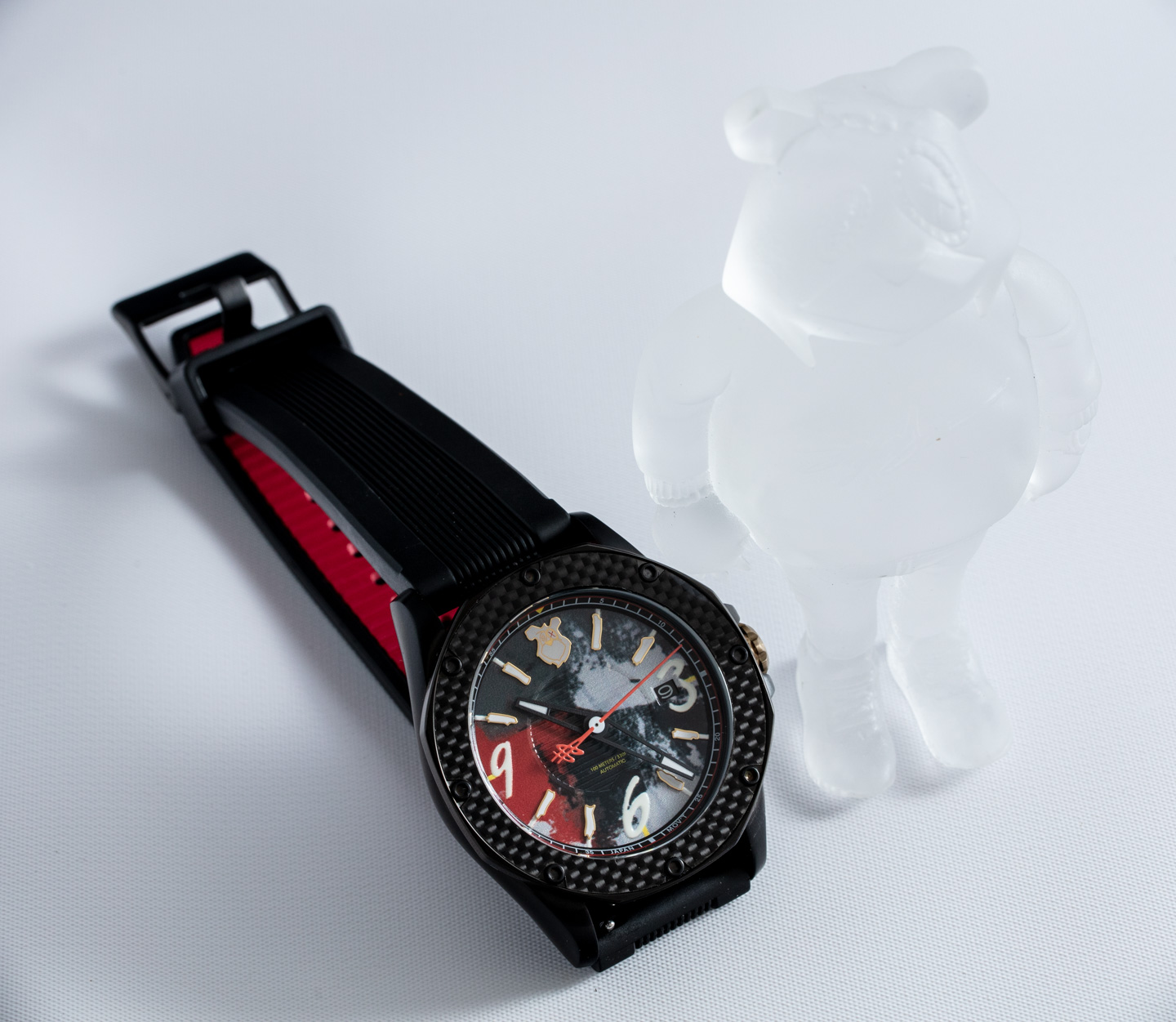
The King Saladeen JP-427G watch is an impressive, if not ambitious kit. It includes a timepiece, two interchangeable bezels, a “JP The Money Bear” figurine, and a highly detailed presentation packaging clearly intended for a culture that fetishizes the “unboxing experience.” JP The Money Bear is a character that was created by King Saladeen in homage of a deceased friend, but which now is a core part of the artist’s DNA. In addition to the frosted, transparent figurine toy, the face of JP The Money Bear is used as the 12 o’clock hour marker on the dial.
The entirety of the decorative elements on the 42mm-wide (13.3mm-thick) PVD-coated black steel case and dial are colors, materials, and visual cues relevant to King Saladeen himself. The watch is the ultimate celebration of his person and his work. It’s very much the ideal treat for mega-fans, but it also illustrates the interesting challenge of proper watch design. The watch itself benefits from being manufactured with a timepiece-making specialist, if only to protect the “watchiness” of the end product. It is often the case that when artists try to design a watch, the resulting composition loses functional value as a timepiece. This is because watches must follow strict visual rules, a lesson not taught in the vast majority of art schools. Because King Saladeen is self-taught, I kept wondering what he learned about watch design as a field, merely through this particular design exercise.
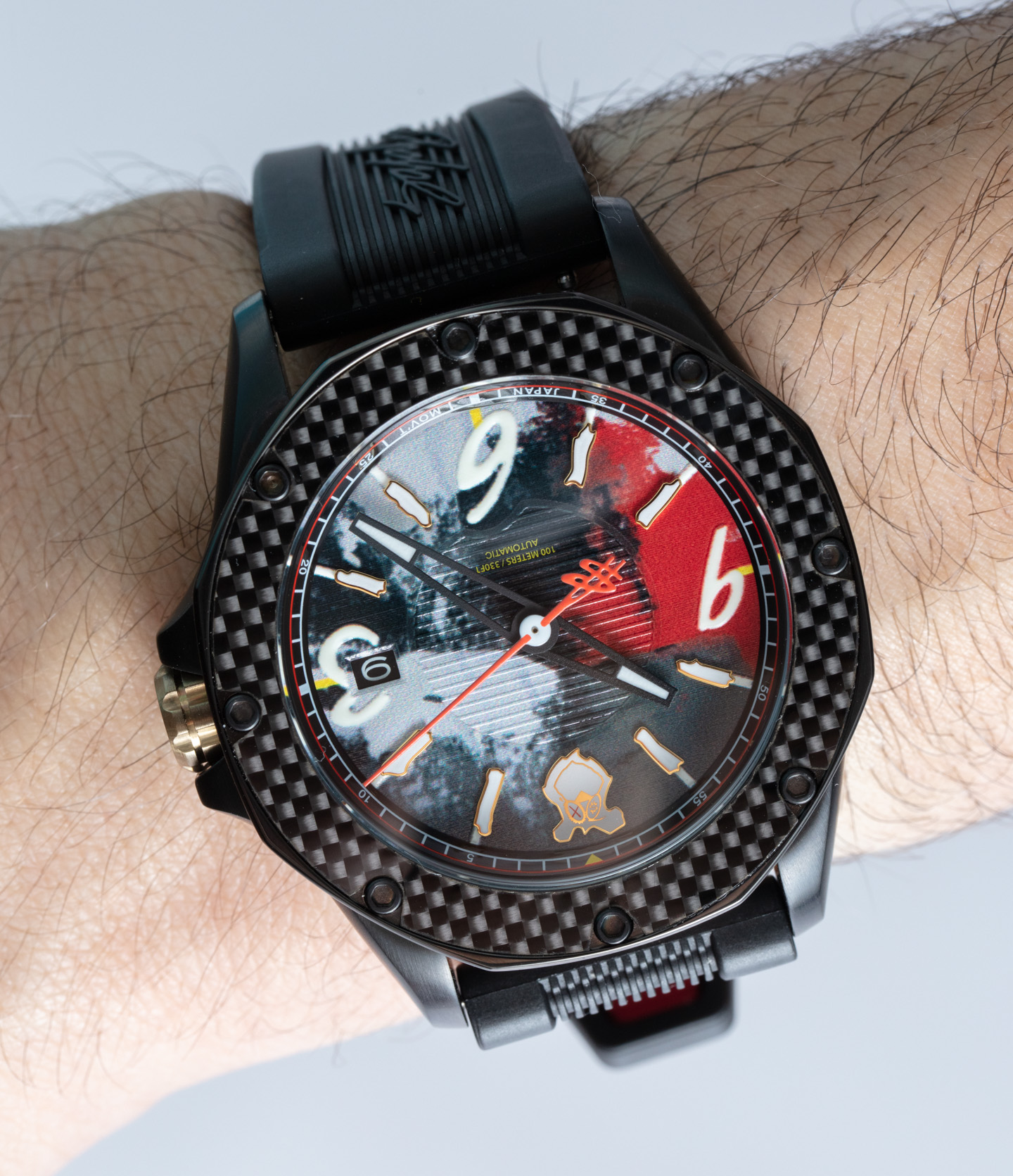
His manufacturing partners did a good job to make a unique design, but one that still serves its wrist watch goal suitably – which was probably the most challenging on the dial, where artistic boldness and legibility seem to compromise in an elegant ballet of contradictions. This includes the abstract painting-inspired dials, to the shape of the “brush stroke” hour markers. Because King Saladeen could not decide between a metal bezel with gold-toned screws and a Royal Oak-style bezel in carbon fiber, the watch comes with both. All you need to do is unscrew one bezel and replace it with the other.
The first 25 pieces of the JP-427G watch are more expensive because they come with a hand-painted dial. The entire assortment of watches is 525 pieces, with the core collection being less than one-third of the price of the fancier hand-painted models. Though a true fan (also truly well-funded) would want the allure of the hand-painted over printed dial that most people will wear on their wrist. The dial also has luminant-painted skeletonized hands and hour markers. I actually feel that the weakest element on the dial is the hands — namely because they are the least original (and not the same color as the hour markers). Even though the King Saladeen hour markers are a bit strange, they are still my favorite part of the dial. Then you have the King Saladeen’s slick representation of the dollar sign as the counterweight on the central seconds hand.
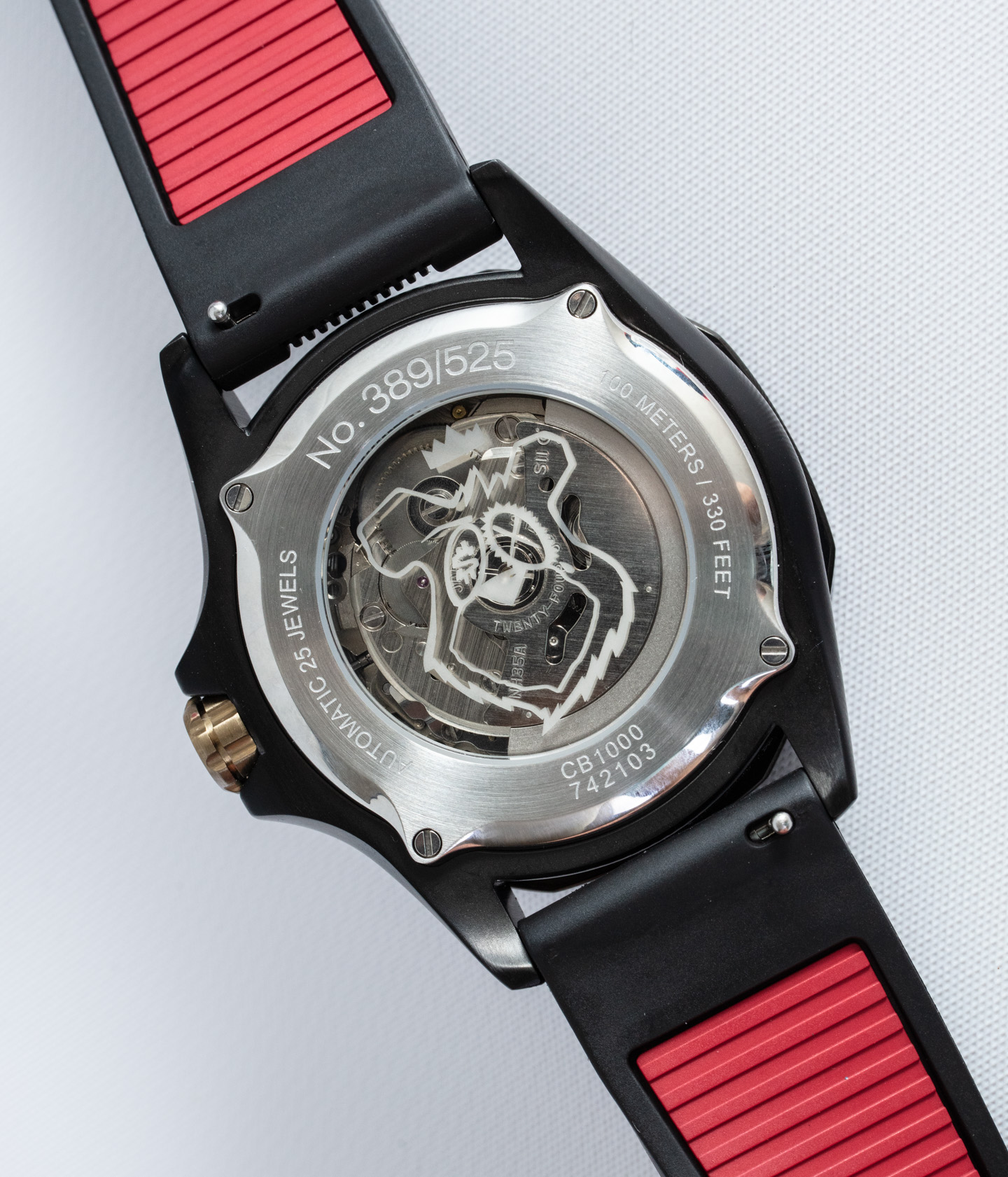
Inside the 100-meter water-resistant case is a Japanese SII NH35A automatic mechanical movement that operates at 3Hz with about two days of power reserve. You can see it through the caseback window, which has additional JP The Money Bear graphics printed on it. The movement is robust but basic, and this is about as much as you’d want to spend on a watch with an NH35A movement (though this is, by no means, the most expensive watch I’ve reviewed with an NH35A movement powering it). Attached to the case is a black and red silicone strap on easy-release spring bars.
The King Saladeen JP-427G watch is a serious watch for an audience that probably wasn’t in the market for their next timepiece. That’s what makes the value proposition interesting to the watch industry because people like King Saladeen are successful at selling “cool decorative stuff” (which is often thrown into the larger category of “art”) to an audience interested in vibing with his persona and aesthetic. That’s an attractive pool of consumers to watchmakers, which is the core reason why they are experimenting by making the luxury watch dreams of people like King Saladeen come true. I happen to think that is a wise approach because timepiece products like this can help to appreciably supplement the world of our favorite old names in horology.
Now let’s hear from King Saladeen himself. I’ve asked him a few questions about his debut wristwatch product the JP-427G. The watch is a limited-edition of 525 pieces and has a retail price of $999 USD. Here’s what King Saladeen had to say to aBlogtoWatch:
Ariel Adams: Speaking to an audience who may not be familiar with your work, tell us a bit about what you are most well known for and the types of creations you are responsible for.King Saladeen: I’m an entirely self-taught, new-age contemporary artist. Being self-taught means I can paint and create based on instinct rather than following these arbitrary rules that don’t speak to who I am as an artist. I’m known mostly for my colors and abstract street art, but my work spans from painting on canvas to luxury car skins, merchandise, vinyl toys, and sneakers.
I’m probably most well known for JP the Money Bear, which was inspired by my late best friend JP, who pushed me to start painting when it didn’t really make sense. This is my first watch, and every part of the design was inspired by JP — he’s my constant reminder that time is priceless and we have to make the most of every moment. This watch is a physical expression of that.
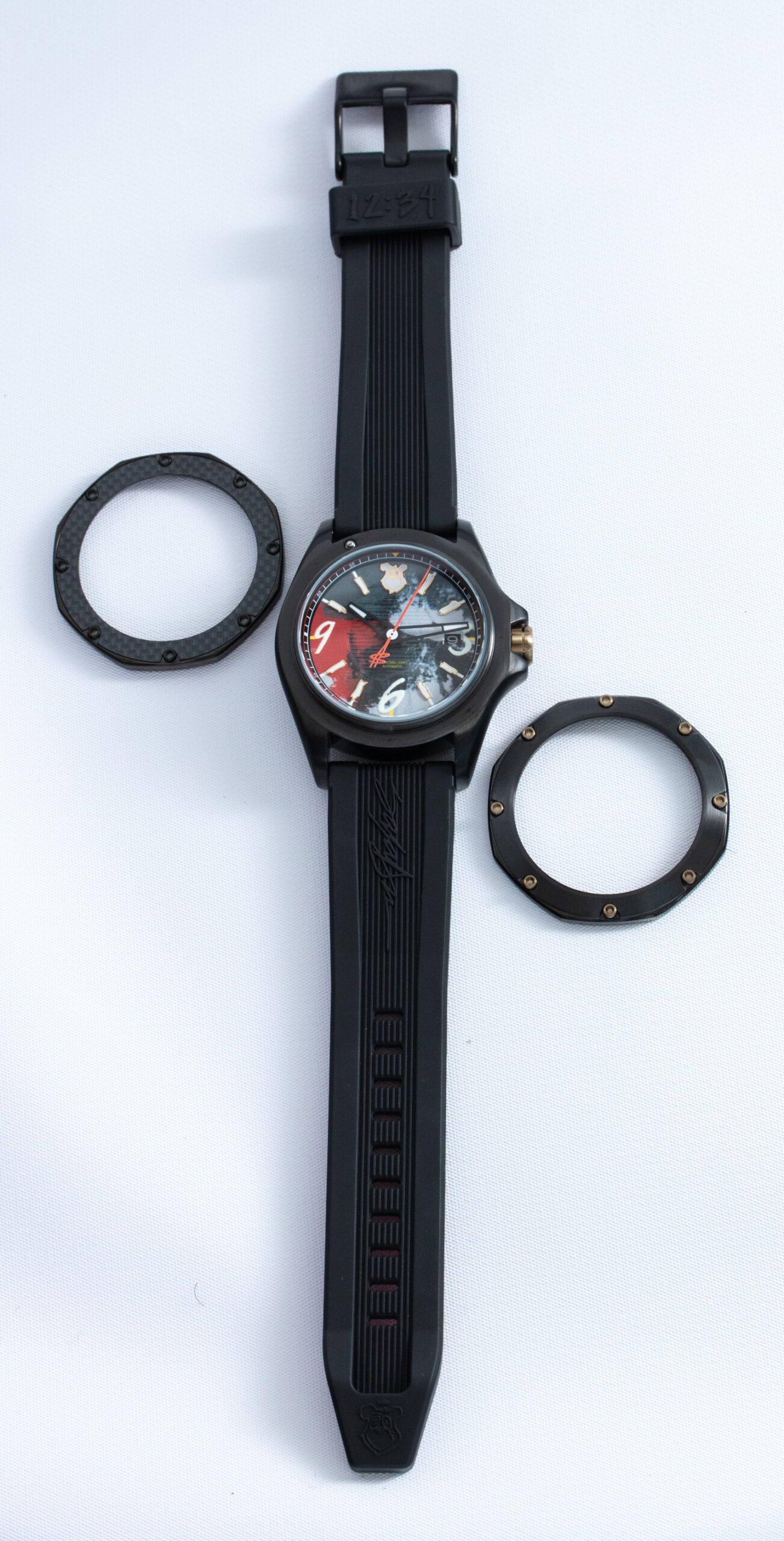
Ariel Adams: You have the special status of having a new watch with your brand name on it, as opposed to a traditional collaboration project. In your opinion, how does a novel timepiece fit in to the larger category of King Saladeen products?
King Saladeen: I’ve always had a complicated relationship with time — partially because I lost my best friend JP too young and partially because he really pushed me to go after my dreams. So I’ve always had this feeling that time is priceless in my head and this watch is really an expression of that.
Time is complicated — it’s a reminder of our past, present, and future but also what we’re capable of when we work together on things we’re passionate about. Having my name on this watch rather than doing a “traditional” collaboration project was big for me because I wanted ownership. A lot of those traditional collab deals come with a lot of red tape and rules and that’s just not me. I can honestly say this experience has allowed me to express myself like never before. The end product is really dope.
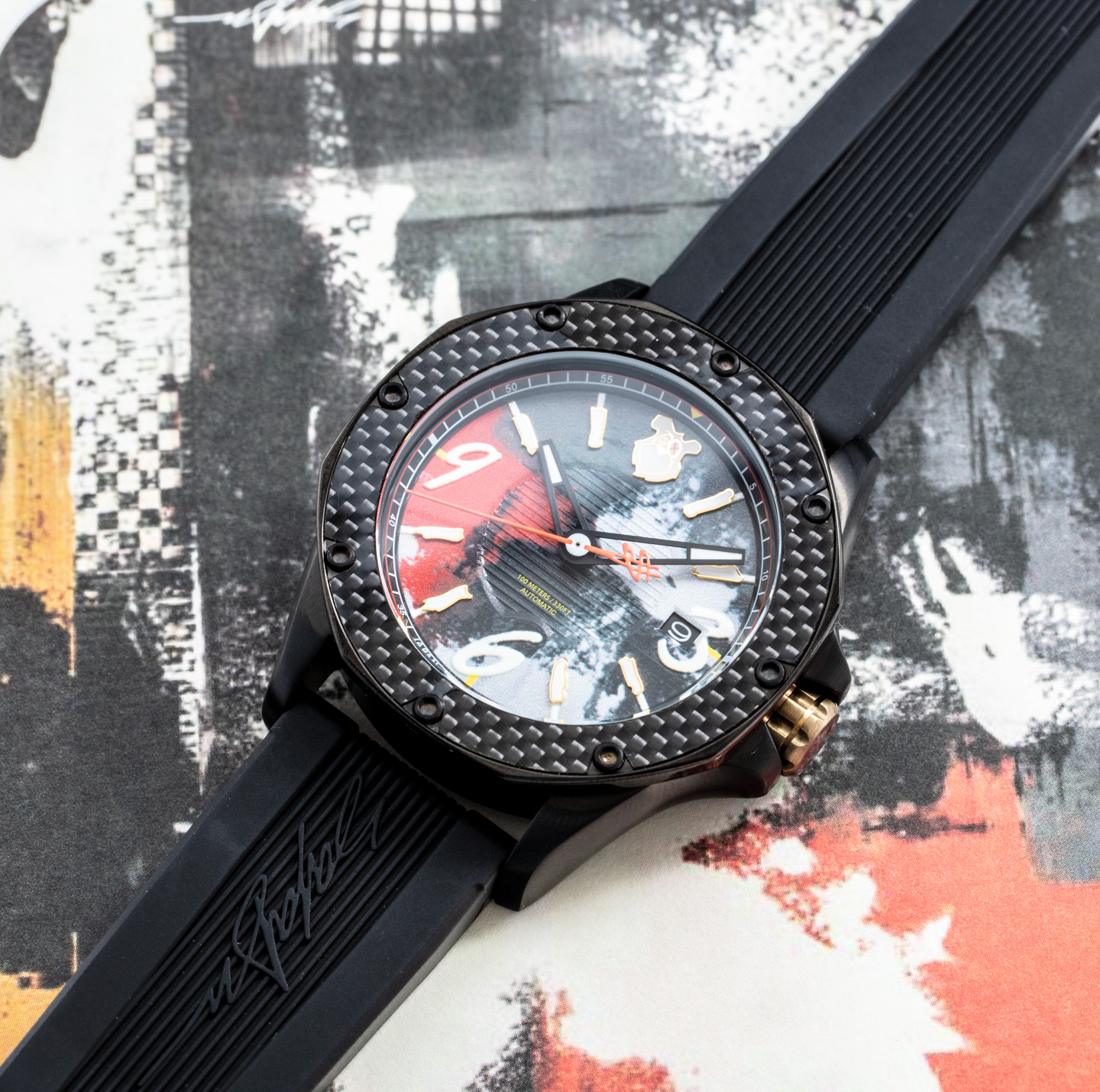
Ariel Adams: Tell us a little bit about your personal journey with watches, as well as the status of fine timepieces among peers in your business and lifestyle world?
King Saladeen: My family is a big part of my life and always has been. They’ve supported my obsession with art since the beginning. Especially my grandfather, and he always wore a watch — for some reason, as a kid, I noticed that and really respected it.
I’ve since realized that every man I ever considered successful wore a watch or was some kind of watch collector, so having the opportunity to create my own was pretty awesome. One of my inspirations for this watch was the IWC Top Gun and also my favorite JP Money Bear painting. I wanted it to feel creative, active, wearable but also sleek and different. I really feel like I achieved that.
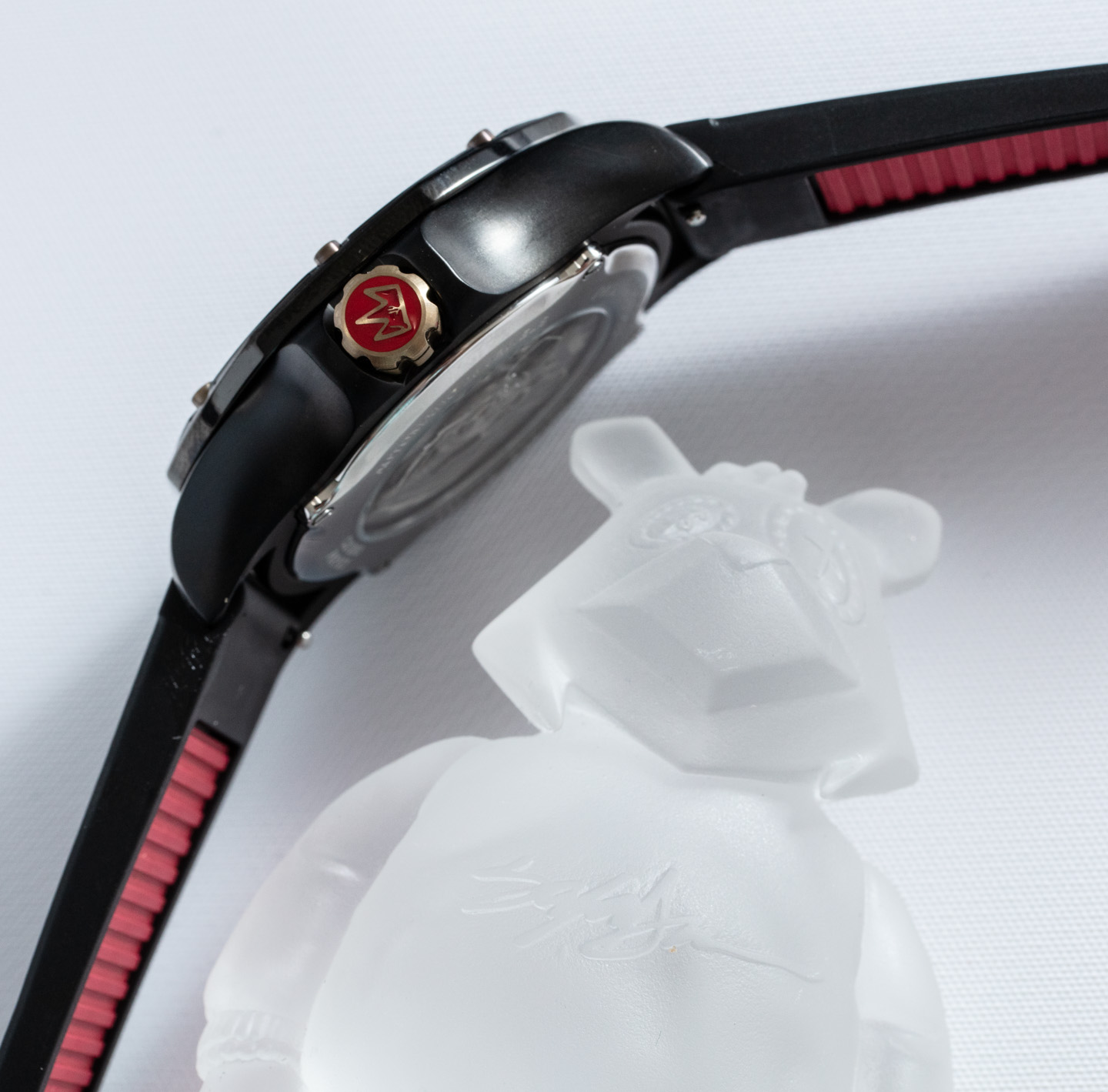
Ariel Adams: The King Saladeen watch and presentation kit are full of details and nuance. Describe some of your favorite features and explain how the various elements come together to form a cohesive composition that well represents both your tastes and what you are known for as a creator.
King Saladeen: I love the size and shape but really that it’s all black and then when you look closely, you see all these details and nuances where you’re like, oh that’s King Saladeen — my logo, the JP Money Bear at the 12 o’clock position, the gold accents, the carbon fiber… it’s really a dream come true for me.
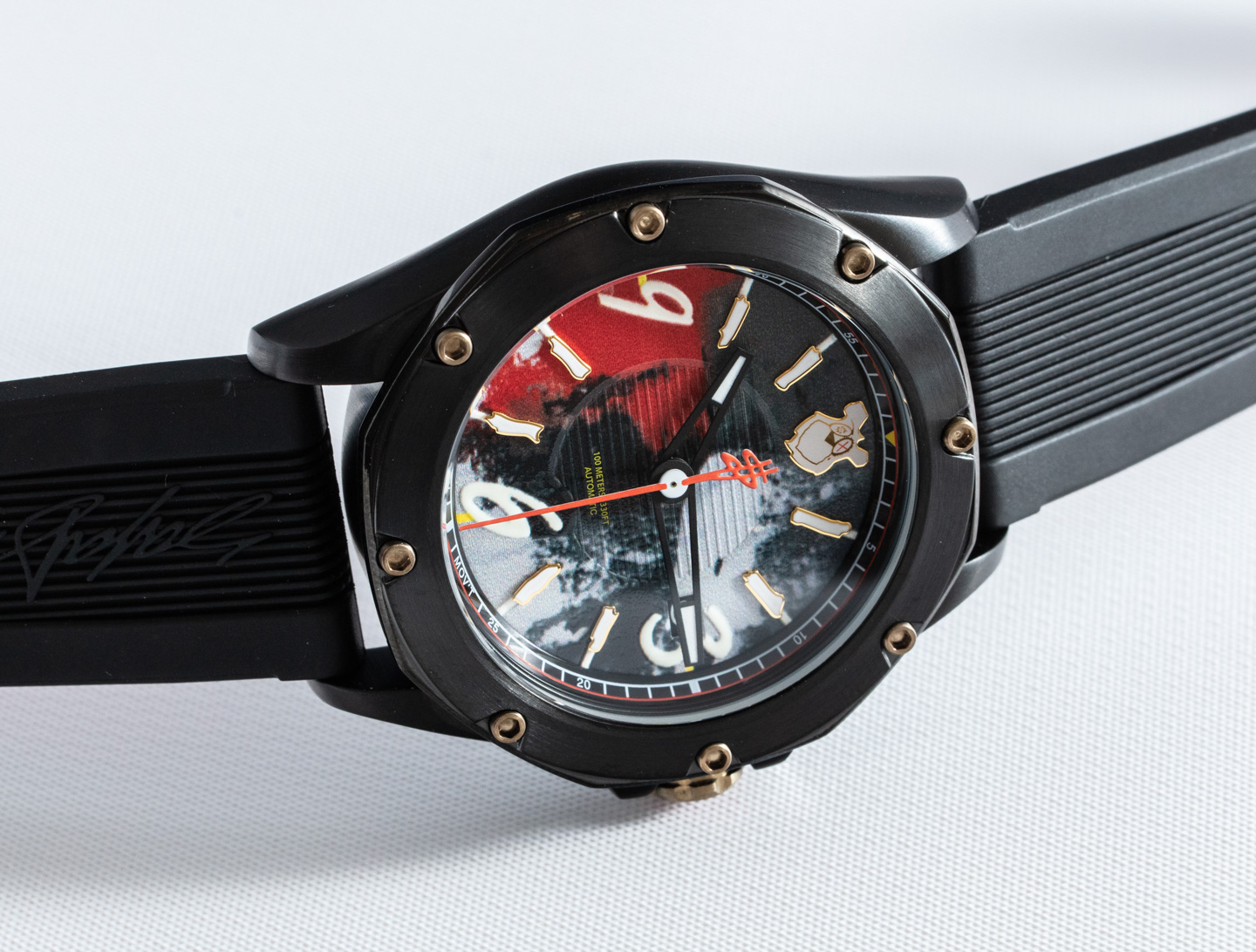
Ariel Adams: What types of wearers did you have in mind when designing the watch? Who do you envision wearing the watch, and what types of you activities do you see them engaging in with it on their wrist?
King Saladeen:
I’m not really someone who designs for one person, it’s more like what feels right for me as an artist. But I can see it on other artists or creative athletes but also watch collectors who appreciate the finer things in life and abstract, contemporary art.
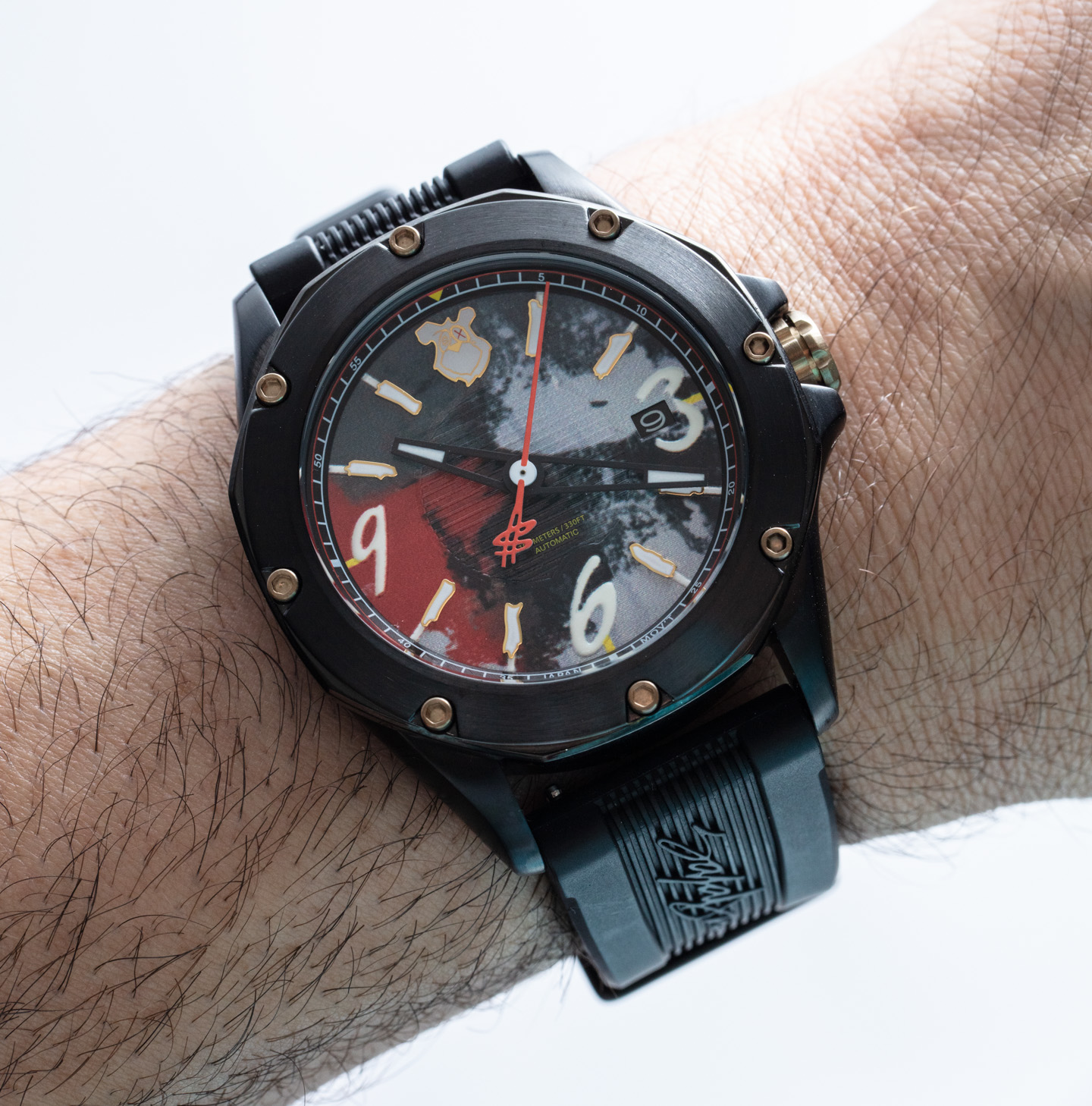
Ariel Adams: More generally speaking, as traditional watches are more about self-expression than utility these days — from your particular context, how do you see the role of watches changing or persisting in popular culture over the next several years?
King Saladeen: I feel like the watch culture is growing and evolving every day. And yeah, it’s definitely more about self-expression these days than actual utility. But also, dope watches have always been part of popular culture, and I think we’re going to start to see more watches as almost wearable art. It’s expressive and individualistic and people are going to continue to collect what they love. I think we’re just breaking the surface when it comes to the collision of art and timepieces, though. This is just the beginning.
Learn more at the King Saladeen Store website here.

